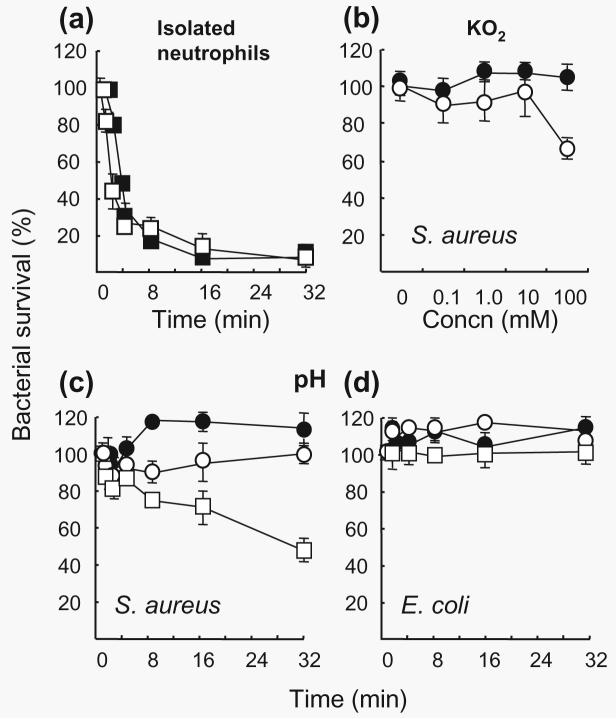Fig. 1.
Effect of pH on bacterial viability, destruction by stimulated neutrophils and bactericidal effects of . (a) IgG opsonized S. aureus (■) or E. coli (□) (1 × 108 c.f.u. ml−1) was mixed at a ratio of one target organism to five neutrophils in 1 ml PBS (pH 7·3) for the indicated periods of time and bacterial viability was determined. The mean (±se) of three experiments is shown. No significant difference was observed between killing of S. aureus and E. coli. (b) Bactericidal effect of was determined by suspending S. aureus (1 × 107 c.f.u.) in 0· 01 M phosphate buffer (pH 7·5) (●) or buffer containing different concentrations of KO2 (○). Each point is the mean of triplicate experiments (±se). (c, d) To determine the effect of pH on bacterial viability, S. aureus or E. coli (1 × 107 c.f.u. ml−1) was incubated at 37 °C in 0·01 M phosphate buffer, pH 5·5 (□), 6·5 (○) or 7·5 (●). Reduction in survival of S. aureus at pH 5·5 compared to 6·5 was found to be significant, P < 0·033.

